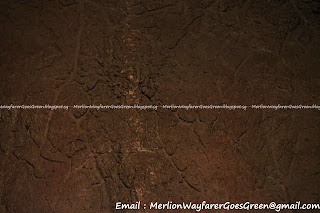"Titans of the Past - Dinosaurs & Ice Age Mammals"
Science Centre Singapore
Jurong East
West, Singapore
October/November 2013
Triceratops lived from 65-68 million years ago in the northern Rocky Mountain region of North America. Despite its huge size, it was a plant-eater.
It was one of the largest horned dinosaurs, with a skull 9 feet long and 6 feet wide - This meant that the width of a Triceratops head is as wide as that of a grown man lying down!
The live animal weighed about 20 thousand pounds. Comparatively, a large bull elephant weights only about 14,000 pounds.
The neck shields of Triceratops, and all other horned dinosaurs, were indented with branching blood-vessel channels. Its head was encompassed with keratin.
In today's context, birds with keratin beaks are often very colourful.
Indications of Maturity
Compared to the smaller and younger Triceratops skulls, the bones in these skull are tightly-fused together with the orbital horns pointing completely forward.
Young Triceratops have a short frill while a fully mature Triceratops adult has a long frill and a long face.
As Triceratops age, their faces grow longer in proportion to their shields.
Juveniles have shorter nasal horns that have not been fully fused into the nasal bones.
Blood vessel grooves are more prominent in adults. These grooves indicate that the keratin has hardened, and was pushing the vessels into the bone as the skull continued to grow.
"For more than 100 years, it was thought that Triceratops and Torosaurus were two different dinosaurs, but research at the Museum of the Rockies showed that Torosaurus was simply a full grown adult Triceratops."
JB Scannella & JR Horner (2010)




























